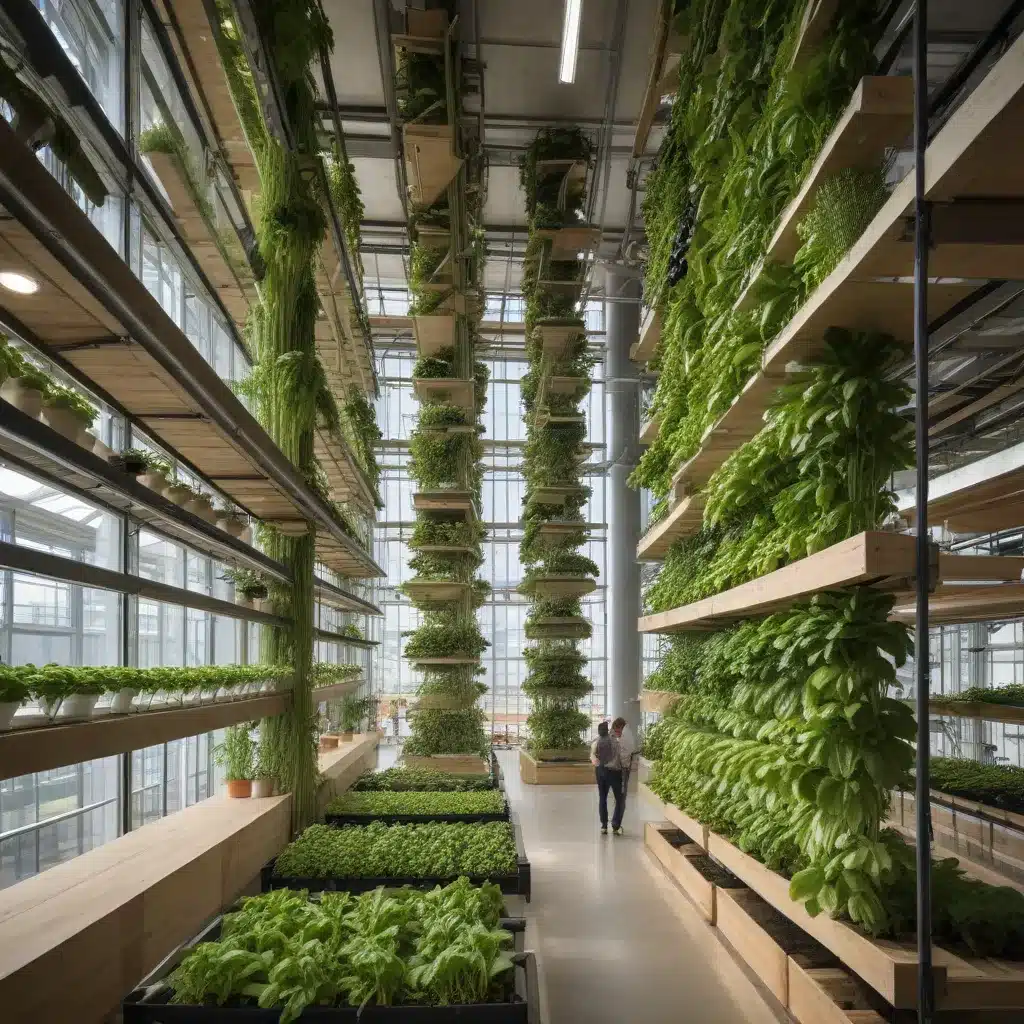
Sustainable Architecture and Vertical Farming: Integrating Agriculture into the Built Environment
As the world grapples with the pressing challenges of food security, environmental sustainability, and rapid urbanization, architects are increasingly exploring innovative ways to integrate agriculture into the built environment. This emerging approach, known as “agricultural integration,” holds immense potential to create more resilient, productive, and livable communities across Europe.
Sustainable Architecture
At the heart of this integration lies the principles of sustainable design, which prioritize energy efficiency, renewable energy integration, and the creation of environmentally responsible buildings. Architects are harnessing cutting-edge techniques to design structures that minimize their carbon footprint and maximize their positive impact on the local ecosystem.
Principles of Sustainable Design
One of the core tenets of sustainable architecture is the efficient use of resources. This involves the selection of materials with low embodied energy, the incorporation of passive cooling and heating strategies, and the optimization of natural lighting. By carefully considering the entire lifecycle of a building, architects can create structures that consume far less energy and generate fewer emissions compared to traditional construction methods.
Energy-Efficient Building Techniques
Innovations such as geothermal heat pumps, solar-powered ventilation, and smart building automation systems are revolutionizing the way we design and operate our built environments. These technologies not only reduce energy consumption but also provide opportunities for on-site renewable energy generation, further enhancing the sustainability of the structure.
Renewable Energy Integration
The integration of solar photovoltaic systems, wind turbines, and bioenergy solutions into architectural designs is another key aspect of sustainable architecture. By harnessing the abundant natural resources available across Europe, architects can transform buildings into energy-positive assets that generate more power than they consume, contributing to the region’s ambitious decarbonization goals.
Vertical Farming
Woven seamlessly into this sustainable architecture movement is the rise of vertical farming, a transformative approach to urban agriculture that is gaining traction across Europe. By leveraging controlled environments and advanced growing systems, vertical farms can produce high yields of fresh, nutrient-dense produce while minimizing the use of land, water, and other resources.
Benefits of Vertical Farming
Vertical farming offers a myriad of benefits, including improved food security, reduced carbon emissions from transportation, and the efficient use of limited urban spaces. By integrating these systems into building designs, architects can create self-sustaining ecosystems that provide local communities with a reliable source of fresh, sustainable produce.
Hydroponic and Aeroponic Systems
The heart of vertical farming lies in its innovative growing systems, which often utilize hydroponic or aeroponic technologies. These advanced methods allow plants to thrive in closed, climate-controlled environments, maximizing productivity while minimizing the environmental impact associated with traditional agriculture.
Urban Agriculture Concepts
Architects are exploring a range of urban agriculture concepts, from rooftop greenhouses and façade-integrated vertical farms to repurposed industrial spaces and underground cultivation systems. By seamlessly integrating these agricultural elements into the built environment, they are creating multifunctional spaces that address the pressing needs of modern cities.
Integration of Agriculture and Built Environment
The synergies between sustainable architecture and vertical farming go beyond the technical aspects, as architects strive to create holistic, multifunctional designs that truly harness the power of agricultural integration.
Adaptive Reuse of Structures
One innovative approach involves the adaptive reuse of existing structures, transforming abandoned warehouses, factories, and other industrial spaces into thriving urban farms. By repurposing these underutilized buildings, architects can breathe new life into neglected areas, creating vibrant hubs of food production and community engagement.
Rooftop and Façade Farming
The integration of agriculture into the building envelope, through the use of rooftop farms and vertical gardens, is another key strategy. These methods not only provide fresh produce but also offer a range of environmental benefits, such as improved air quality, reduced urban heat island effects, and enhanced biodiversity.
Multifunctional Building Design
Architects are also exploring the concept of multifunctional building design, where agricultural spaces are seamlessly woven into the overall architectural program. This might include community gardens, educational facilities, or even commercial food production units within a single structure, creating a symbiotic relationship between the built environment and the natural world.
Challenges and Considerations
While the integration of agriculture and architecture holds immense promise, it also presents a range of challenges that must be carefully navigated. Architects and developers must consider the environmental impact, policy frameworks, and technological advancements that shape the success of these innovative projects.
Environmental Impact Assessment
Conducting a thorough environmental impact assessment is crucial to ensure that the integration of agriculture into the built environment is truly sustainable. This involves evaluating factors such as water usage, energy consumption, waste management, and the impact on local ecosystems.
Policy and Regulatory Frameworks
The integration of agriculture and architecture also requires navigating a complex web of policy and regulatory frameworks. Architects must work closely with policymakers and regulatory bodies to ensure that their designs comply with zoning laws, building codes, and environmental regulations, while also advocating for policies that support and incentivize these innovative approaches.
Technological Advancements
As the field of agricultural integration continues to evolve, architects must stay abreast of the latest technological advancements, from automated irrigation systems to advanced hydroponics and aeroponics solutions. By collaborating with experts in the field of urban agriculture, they can ensure that their designs leverage the most cutting-edge and efficient technologies available.
The integration of agriculture into the built environment represents a transformative shift in the way we approach sustainable architecture and urban design. By embracing these innovative approaches, architects across Europe are creating resilient, productive, and livable communities that address the pressing challenges of our time. As the European Future Energy Forum continues to highlight the latest developments in renewable energy and sustainability, the integration of architecture and agriculture will undoubtedly play a crucial role in shaping the sustainable cities of the future.







